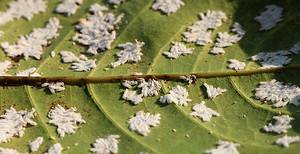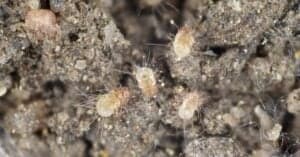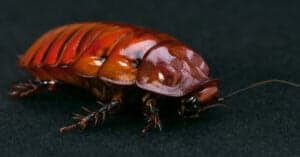To get rid of an infestation the first time, it’s critical to precisely identify the pests that have invade your home. It will cost you more money overall and cause a larger infestation if you misidentify the pests and employ the wrong treatments to get rid of termites or earwigs. The good news is that identifying the differences between an earwig and a termite is quite easy.
Earwig vs Termite: A Comparison
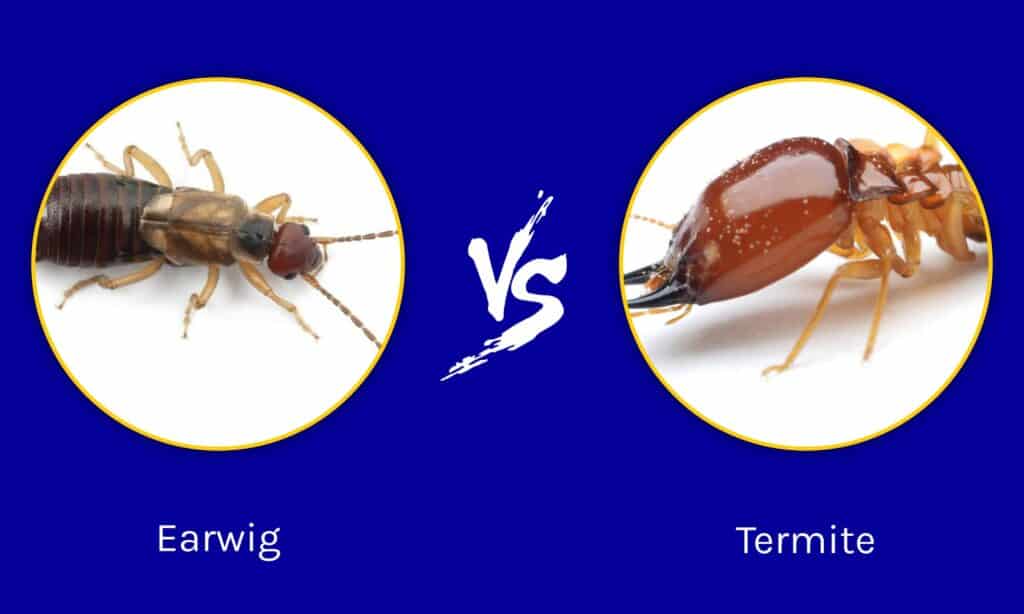
| Earwig | Termite | |
|---|---|---|
| Size | 1-3 cm long | 4 – 25 mm long |
| Colors | Dark Reddish-Brown | White to Light Brown, Translucent Wings |
| Physical Features | Hard Outer Body, 2 Appendages | Resembles A Winged Ant |
| Danger | Gardens, Wood Piles | Furniture, Household Items |
| Diet | Rotting Vegetation, Plants, Flowers | Wood, Grass, Leaves, Cardboard, Cotton |
| Lifespan | 1 Year | 1 – 2 Years, Queens Up To 25 Years |
| Indoor / Outdoor | Mostly Outdoors: Firewood, Waste, Mulch, Leaves, Wet Places | Both: Foundation, Siding, Interior Wood Pieces |
| Infestation | Less Likely in Home, Keep Veggies Fresh And Plants Well Cared For | Causes More Home Damage Than Any Other Pest |
Key Differences Between Earwig vs Termite
The key differences between an earwig and a termite are size, color, diet, lifespan, key features, and infestation.
No, earwigs and termites are not related in any way at all. They don’t look alike or eat the same things; they also have varied preferences for living arrangements. There are more similarities between termites and ants, including their broad abdomens and long antennae that point in a straight line. Let’s explore 8 key differences between earwigs and termites.
Earwig vs Termite: Size
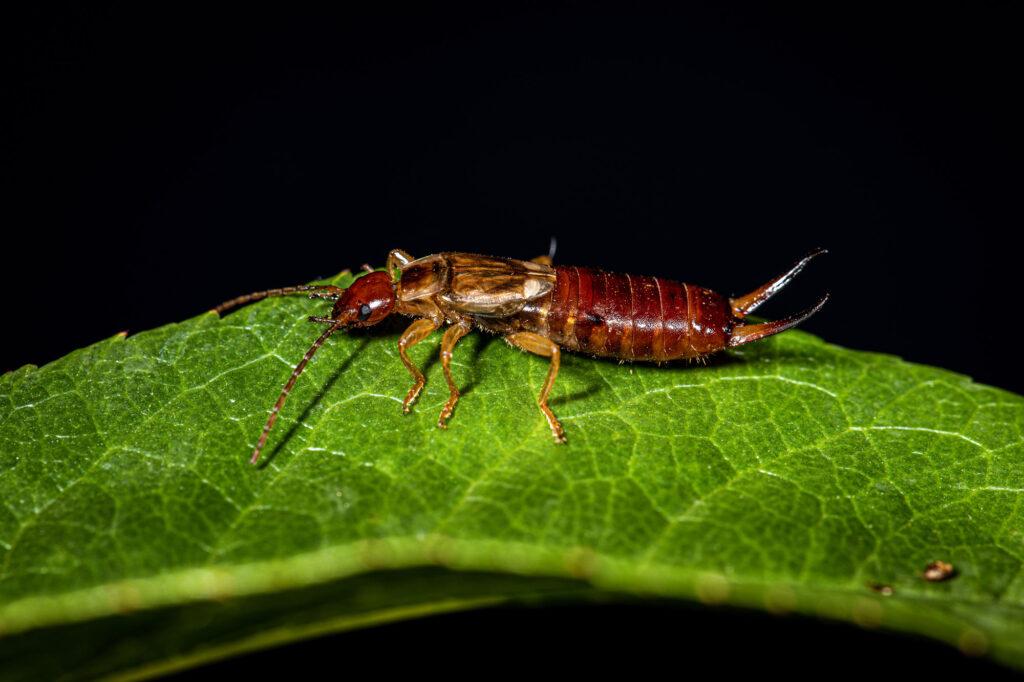
Earwigs are tiny insects with a pair of pincers.
©iStock.com/Huseyin Selcuk KIRAY
Earwigs are tiny insects with two antennae, six legs, three body segments, and a pair of fearsome pincers on their abdomen. It measures between 1 and 3 centimeters in length, depending on the species. Termites have a soft body and straight antennae. They range in length from 4 to 25 millimeters. Queens and kings are larger, growing to about an inch in length.
Earwig vs Termite: Colors
The hue of worker termites is paler than that of swarming termites, which ranges from white to light brown. It has a few distinguishing characteristics, including white, translucent wings with equal-length rounded tips. Since the chitin in their shells has not yet formed, worker termites are often white in color. Earwigs are darker due to their tough chitin and range in color from brown to reddish-brown. Chitin is the main component of the exoskeleton of arthropods. Insects are arthropods that belong to the Insecta class.
Earwig vs Termite: Physical Features
It is the swarmer termite that most people notice when they first discover termites in their homes. In appearance, this insect resembles a winged ant. Up close, it has a golden-colored, bulbous head with tiny pincers protruding from it. Termites have four wings that stack neatly on top of one another when they are not in flight. As a result, you’ll find abandoned or damaged wings around your home or where you’re dealing with termite activity.
Despite their long, thin bodies, earwigs are easily recognized by their prominent “cerci” (a Latin term meaning “pinchers”) on their back abdomens. Two tentacles also protrude from the creature’s belly.
Earwig vs Termite: Danger
Termites pose no immediate danger to humans. Termite damage, on the other hand, can lead to financial disaster, an increase in anxiety, and the inability to occupy a building. It’s easy to mistake earwigs for a dangerous pest because of the pincers that protrude from their guts. Earwigs can grip a finger in their forceps, although they do not harm or pose a threat to humans.
Earwig vs Termite: Diet
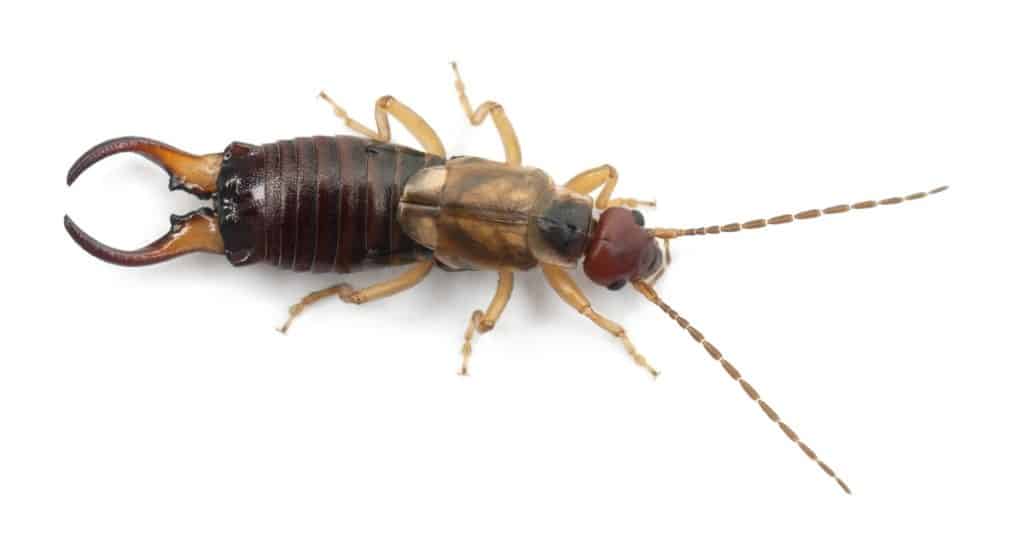
Earwigs eat decaying organic materials.
©Eric Isselee/Shutterstock.com
Earwigs eat a diverse range of foods, including decaying organic materials, insects, and plants like vegetables, flowers, and ornamental plants. Earwigs like to intrude into homes unintentionally and can cause issues. Wood, grass, leaves, and the feces of herbivorous animals are among the primary sources of food for termites, as well as paper, cardboard, and cotton. Many termites prefer wood that is either sound or partially disintegrated.
Earwig vs Termite: Lifespan
One to two years is the lifespan of a termite worker. Termite queens can survive for nearly a decade in an ideal climate. The queen termite, in contrast to certain other long-lived insect species, grows quickly and spends most of its life as an adult in the soil. A typical earwig lives for around a year. In the fall and winter, earwigs mate, and their eggs hatch in the spring. During the metamorphosis process, earwigs develop from an egg to a nymph, and finally to an adult.
Earwig vs Termite: Indoor / Outdoor
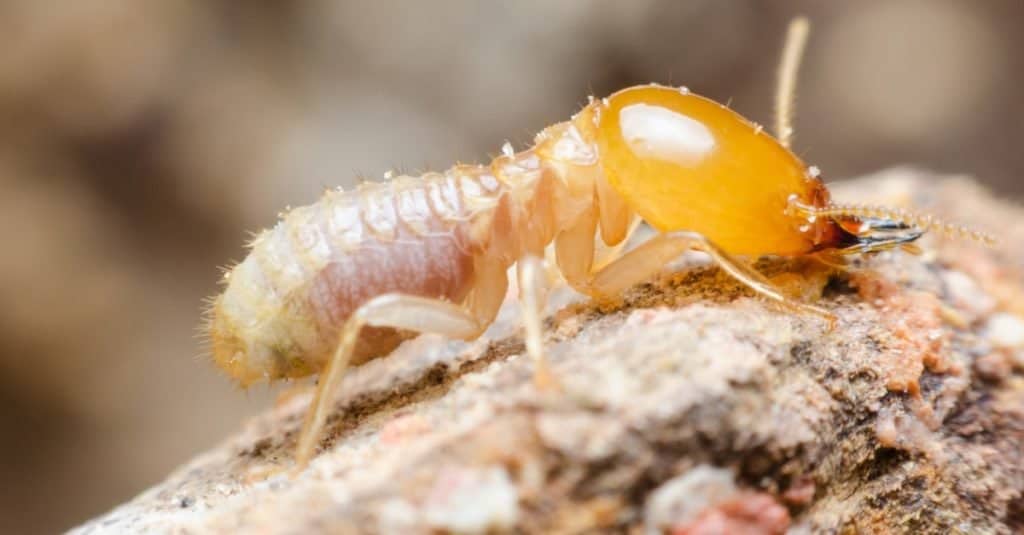
Termites have the ability to chew through wood, flooring, and even wallpaper undetected.
©Mr.Parichat chaikuad/Shutterstock.com
Termites can establish themselves in many areas of your home. Termite infestations are most discovered in the homes outside foundation and wood siding, but they can occur anywhere. Wetness, wood in contact with home foundations, gaps in building exteriors, and wood inside the home all attract termites.
Wet surroundings such as mulch, fallen leaves, logs, and firewood stacks are ideal habitats for earwigs. However, they can enter through screens, doors, or other openings caused by human activity or poor housekeeping. Once inside, they will most likely go to any fruits, veggies, or plants in the home to feast.
Earwig vs Termite: Infestation
Earwigs emit an unpleasant stench when disturbed. If earwigs are spotted inside, sweep them up and toss them. You can also spray earwigs with rubbing alcohol and water to kill them instantly. Rotting wood may indicate a termite infestation. They’re usually located near the foundation but can also be found in basements or crawl spaces. Spraying termiticide on the soil around your home is a popular termite control method. Termites can be treated directly on wood.
Wrapping Up Earwig vs Termite
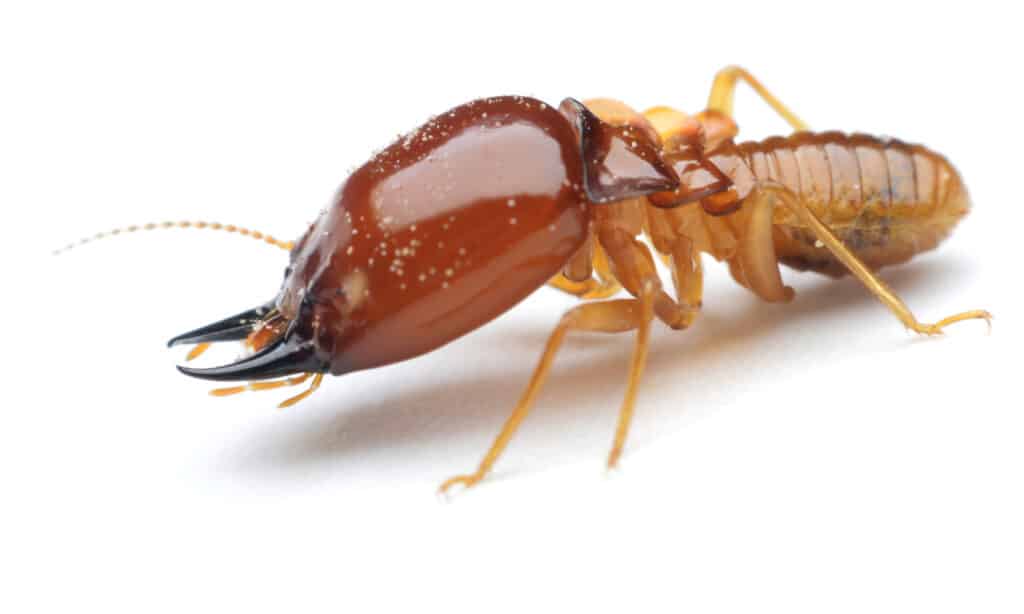
Termites are very destructive household pests.
©chakkrachai nicharat/Shutterstock.com
Termites are the most destructive of all household pests. As their colony grows, they prey on wooden structures, devouring them one by one. Termites should be treated as soon as you notice any signs of their presence with a strong termiticide. An earwig’s diet consists of plant matter, although they can also assault living plants. People regard them as an inconvenience when they invade the interiors of their homes, but they should be relatively easy to eradicate. They are also much less invasive than termites.
The photo featured at the top of this post is © Eric Isselee/Shutterstock.com
Thank you for reading! Have some feedback for us? Contact the AZ Animals editorial team.



